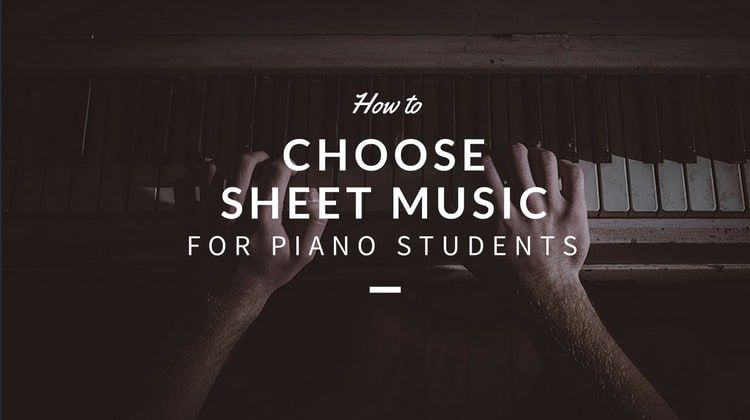How to Choose Sheet Music for Piano Students
What criteria should teachers consider when choosing an appropriate arrangement for a student? The three most important skill areas to consider are reading, rhythm, and technique.

Piano teachers know that the day always comes when a student asks to play a song or piece that isn’t in their method book. If they’re a first or second year student, it’s quite possible that they aren’t ready to play the most difficult (and usually most accurate) arrangement available. As their teacher, it can prove challenging to find appropriate sheet music for piano students. Fortunately, these days there are multiple difficulty levels of nearly any song or piece to choose from, such as those offered here at Musicnotes.
What criteria should teachers consider when choosing an appropriate arrangement for a student? In my experience, the three most important skill areas to consider are reading, rhythm, and technique.
Reading
When comparing arrangements from among three levels offered at Musicnotes, first look at the key. For example, the Solo Piano version of the pop song “7 Years” is in B-flat, and so is the Easy Piano version. But the Beginner Notes version is in C. Has your student already played repertoire in the arrangement’s key? If not, have they at least played the scale and/or chords derived from that key? On the other hand, maybe they haven’t yet played in that key, but you think it would be a good next step for them.
Next, compare the arrangements’ tessitura (range of notes). Is your student comfortable reading the given notes, especially those above and/or below the treble and bass staffs? If not, are they ready to expand their reading range?
Finally, does your student know how to read and correctly play all the note durations of an arrangement, especially 8th and 16th notes?
Rhythm
The first aspect of rhythm to consider is the arrangement’s time signature. Next, look for specific rhythmic challenges such as dotted rhythms and triplets. Be particularly attentive to syncopated rhythms, as these can present a real challenge for students encountering them for the first time.
Next, look for less common rhythmic challenges such as triplets in the right hand against two eighths in the left hand (3 against 2).
Finally, consider the arrangement’s feel. Specifically, is a swing/shuffle feel called for? More often than not, the ability to play a swing/shuffle feel is required for bluesy tunes and jazz-inspired repertoire. Does your student know how to accurately interpret standard eighth notes with an instruction to swing? If not, do you think they’re ready to learn?
Technique
For technique, consider the hand independence the arrangement requires. If your student has little experience playing hands together, then a one-hand Beginner Notes arrangement might be the best choice. If they’re equipped to play a two-handed arrangement, consider how difficult the left hand part is. Does the left hand play simple block chords? Or broken chords, a countermelody, or even the melody itself while the right hand plays chords?
Next, consider whether there are multiple voices written for one hand, such as when one or two fingers play quarter notes while another finger sustains a half note. Multiple voices are commonplace in many otherwise simple arrangements, yet students in their first years of study may not have encountered them.
Another aspect of technique to consider is how often the hands change position on the keyboard, and especially whether they must ever change position simultaneously.
Finally, consider minor technical issues that your student may not have encountered, such as scalar passages with multiple crosses (thumb under the hand or fingers over the thumb), stretches outside of a customary five-finger position, four-note chords, and the technical demands of ornamentation such as grace notes or tremolos.
With close attention to all three skill areas – reading, rhythm and technique – you’ll be able to quickly choose an arrangement that matches your student’s current skill level while providing them manageable challenges for further improvement as a player.
This post is part of our new Teacher Series highlighting helpful tips for music teachers. Today’s guest blogger is Portland Piano Lab founder Doug Hanvey. Doug brings with him more than a decade of teaching experience, professional classical and jazz piano study, and a master’s degree in adult education. We’re thankful to Doug for his insight on choosing appropriate sheet music for piano students.

